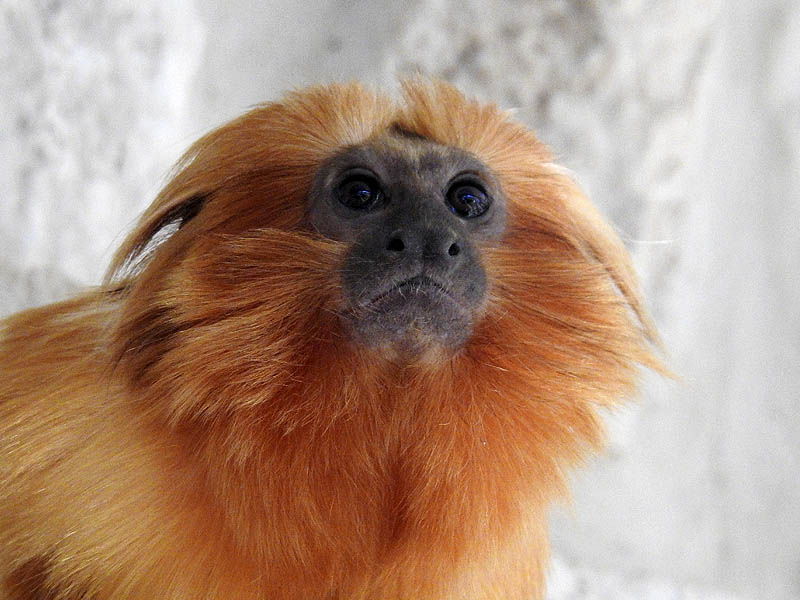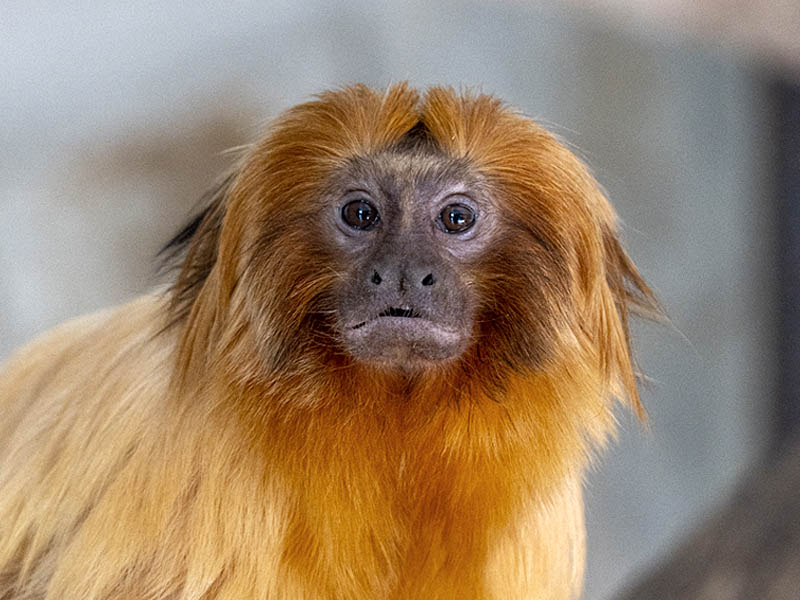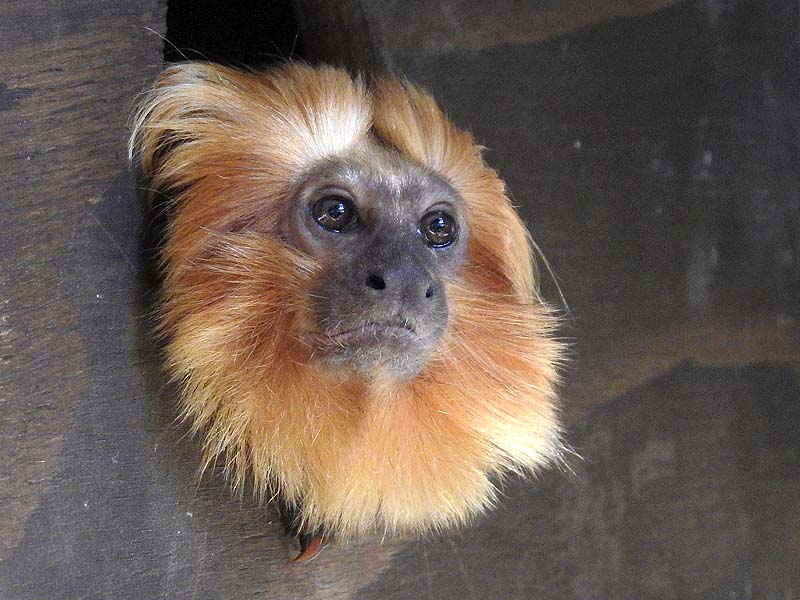


Golden lion tamarin















The golden lion tamarin (Leontopithecus rosalia) is a small primate easily distinguished by its dense golden fur, which moults annually. Its colour is uniform and does not present great contrast along the body, although there is some variety in the shade between different individuals. It gets its name from the abundant mane on its head, sometimes interspersed with dark fur, which only exposes its face.
It lives in territorial groups that are led by a pair, consisting of between 4 and 15 members, all of them part of the same family. In these herds, the care of the young is shared by all, although the female carries the young, usually two, during their first week of life and then the male does the same. They reach maturity between two and three years of age, although they can reproduce at around a year and a half. Groups live in tropical forests, where they find their food. It has very social habits, including a certain vocalisation with which it communicates that it has found food, so that it alerts the rest of the group to come to the place.
It is estimated that there are fewer than 1,400 adult individuals left in the wild, with around 500 specimens in captivity offering hope for their long-term survival. After being classified as critically endangered by the International Union for Conservation of Nature (IUCN) in 2000 and 2003, its current conservation status has improved slightly to endangered, with a declining population and its population expected to decline by 50% between 2019 and 2039 due to habitat loss and fragmentation, competition and hybridisation with other marmoset species, and the influence of a recent outbreak of yellow fever.